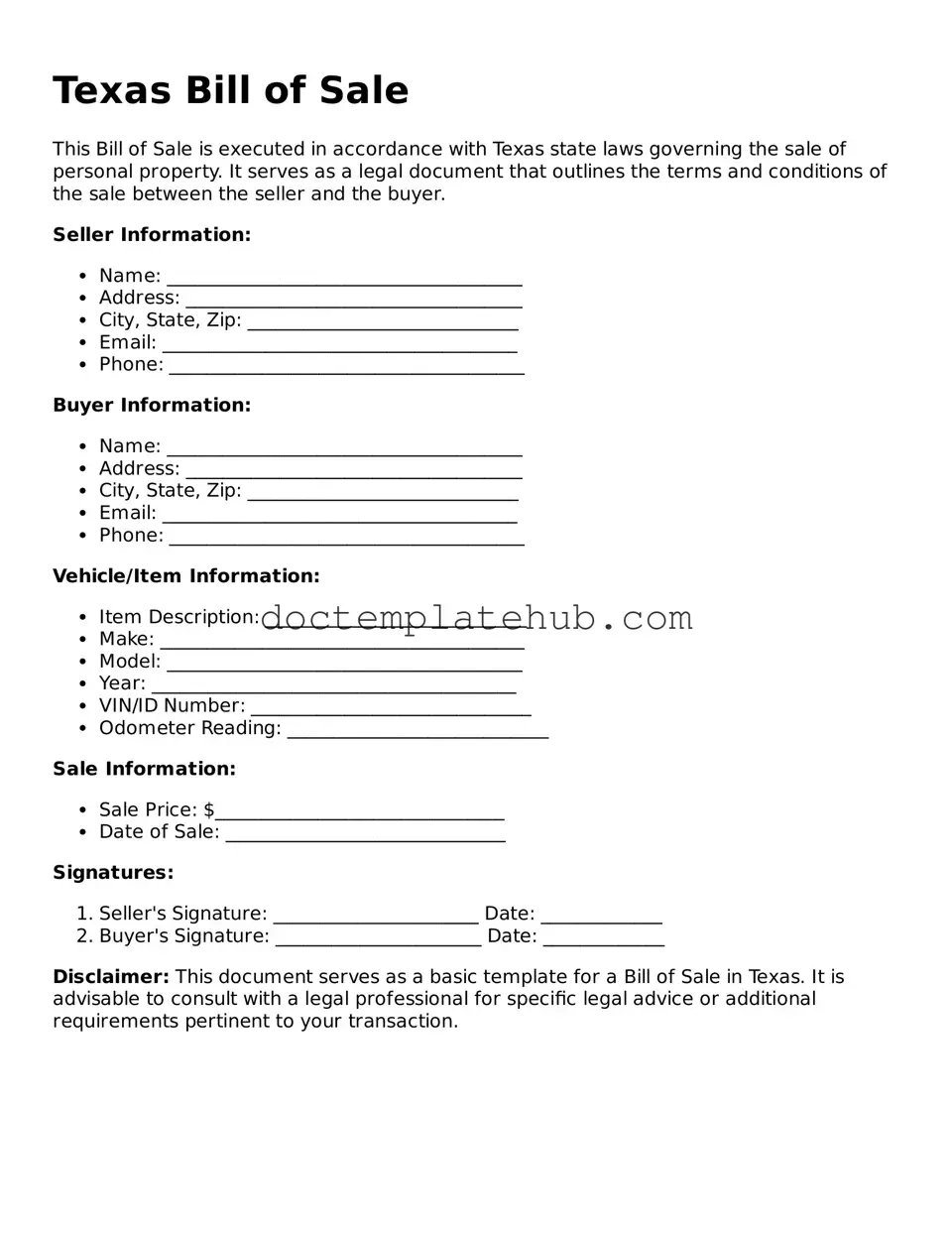What is a Texas Bill of Sale?
A Texas Bill of Sale is a legal document that records the transfer of ownership of personal property from one individual to another. This form serves as proof that a sale has occurred and outlines the details of the transaction, including the identities of the buyer and seller, a description of the item being sold, and the sale price. It is particularly useful for items such as vehicles, boats, and other significant personal property.
Do I need a Bill of Sale for every transaction in Texas?
While a Bill of Sale is not required for every transaction, it is highly recommended for significant purchases. For example, when selling a vehicle, a Bill of Sale can help protect both the buyer and the seller by providing a clear record of the sale. In some cases, such as the sale of a vehicle, the state may require a Bill of Sale for registration purposes.
What information should be included in a Texas Bill of Sale?
A comprehensive Texas Bill of Sale should include several key pieces of information. This includes the full names and addresses of both the buyer and seller, a detailed description of the item being sold (including make, model, year, and Vehicle Identification Number for vehicles), the sale price, and the date of the transaction. Additionally, it may be beneficial to include any warranties or conditions of the sale, if applicable.
Is a Bill of Sale legally binding in Texas?
Yes, a Bill of Sale is legally binding in Texas as long as it is properly executed. Both parties must sign the document, indicating their agreement to the terms outlined within it. While notarization is not required, having the document notarized can add an extra layer of legitimacy and may be beneficial if disputes arise later.
Can I create my own Bill of Sale in Texas?
Absolutely, you can create your own Bill of Sale in Texas. There are many templates available online that can guide you in drafting a document that meets your needs. However, ensure that all required information is included, and consider consulting with a legal professional if you have specific concerns or unique circumstances surrounding your transaction.
What if the item sold has a lien on it?
If the item being sold has a lien, it is crucial to address this in the Bill of Sale. The seller should disclose the existence of the lien to the buyer and ensure that it is cleared before the sale is finalized. Failure to do so could lead to legal complications for both parties. It is advisable to obtain a lien release from the lender and include this information in the Bill of Sale.
Where can I find a Texas Bill of Sale form?
You can find Texas Bill of Sale forms through various online legal document services, government websites, or local office supply stores. Many websites offer free or paid templates that you can customize to fit your transaction. Ensure that the form you choose complies with Texas laws and includes all necessary details for your specific sale.
